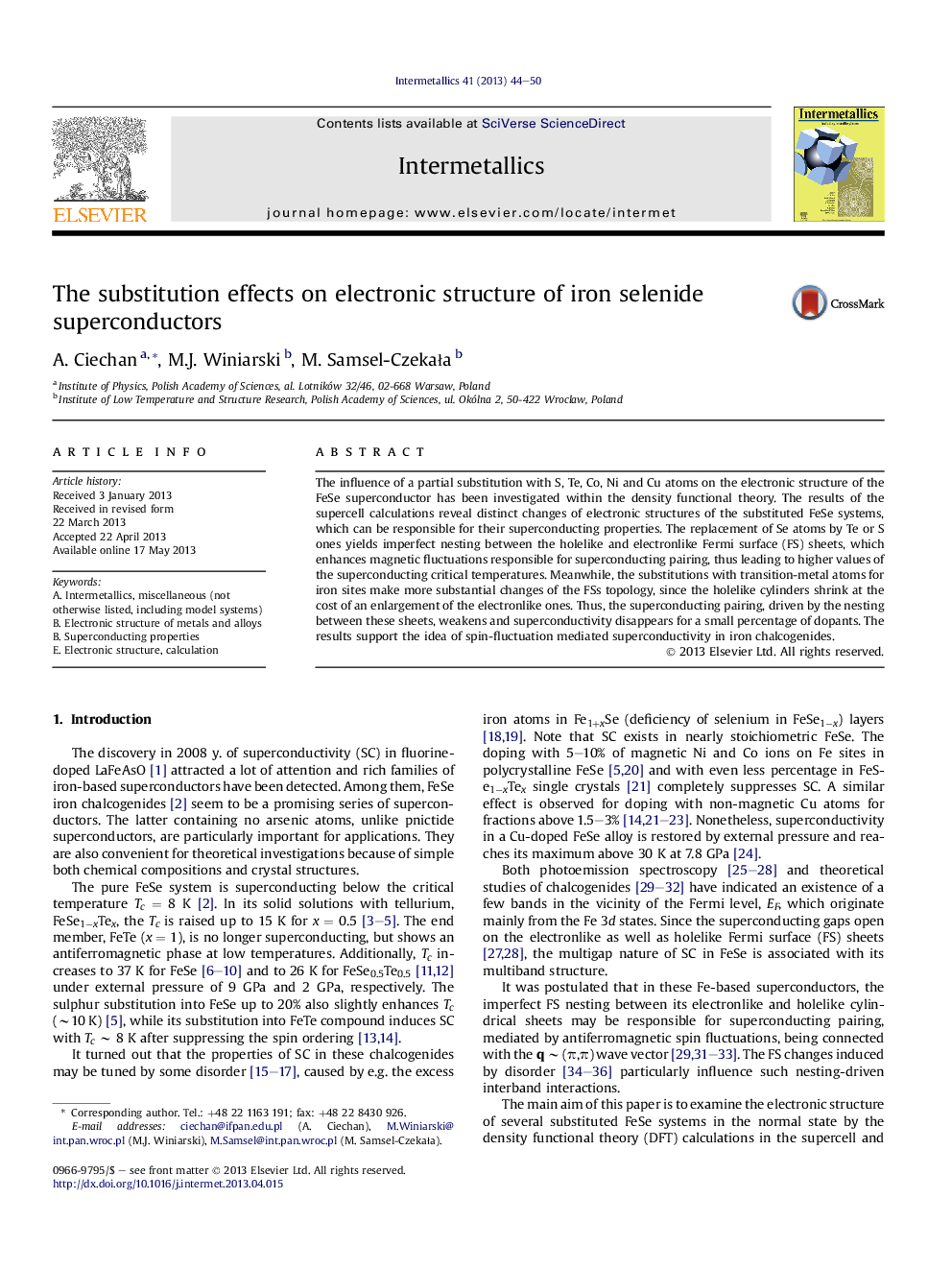| Article ID | Journal | Published Year | Pages | File Type |
|---|---|---|---|---|
| 1600165 | Intermetallics | 2013 | 7 Pages |
•The Fermi surface (FS) changes of doped FeSe superconductors are examined.•Doping with Te and S yields imperfect FS nesting and enhances spin fluctuations.•Doping with Co, Ni, Cu destroys the FS nesting thereby weakening spin fluctuations.•The changes are correlated with the superconducting critical temperatures.•The results support the idea of spin-fluctuation mediated superconductivity.
The influence of a partial substitution with S, Te, Co, Ni and Cu atoms on the electronic structure of the FeSe superconductor has been investigated within the density functional theory. The results of the supercell calculations reveal distinct changes of electronic structures of the substituted FeSe systems, which can be responsible for their superconducting properties. The replacement of Se atoms by Te or S ones yields imperfect nesting between the holelike and electronlike Fermi surface (FS) sheets, which enhances magnetic fluctuations responsible for superconducting pairing, thus leading to higher values of the superconducting critical temperatures. Meanwhile, the substitutions with transition-metal atoms for iron sites make more substantial changes of the FSs topology, since the holelike cylinders shrink at the cost of an enlargement of the electronlike ones. Thus, the superconducting pairing, driven by the nesting between these sheets, weakens and superconductivity disappears for a small percentage of dopants. The results support the idea of spin-fluctuation mediated superconductivity in iron chalcogenides.
